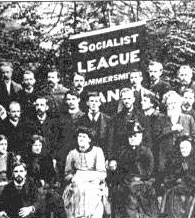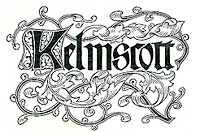| William Morris Initiates the Arts & Crafts Press Movement | |||
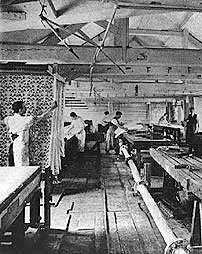 |
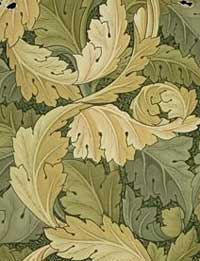 |
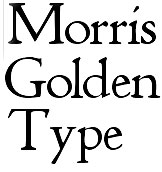 |
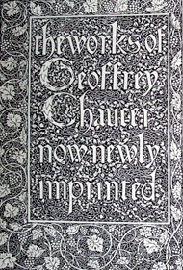 |
| William Morris (1834–1896)
Morris is widely credited as the founder of the arts and crafts movement. As David Raizman writes, “The spiritualization of craft, its link to social reform and skepticism toward the widely held view that industrialization and progress went hand in hand, characterize Morris's attitude and became the basis for a number of organizations and other initiatives that were generally known as the Arts and Crafts Movement.” 1 Morris married the Pre-Raphaelite muse, Jane Burden, and commissioned a new residence, the Red House. Unhappy with the quality of products available for furnishings, Morris worked along with friends to create wallpaper, tapestries and furniture demonstrating good craftsmanship and design. At the project's end, in 1861, they joined together to form a business, Morris, Marshall, Faulkner & Co. By 1875, after some partnership disputes, Morris reorganized the partnership into Morris & Co. |
Morris and Company, 1875
Morris's designs were influenced by the truth to nature credo of the Pre-Raphaelites. He gathered his imagery from nature and used natural and traditional methods, for example using natural vegetable dye for printing on material and printing wallpaper and textiles with wood blocks. Morris was a practicing Socialist but his ideals did not mesh with the realities of his business. His refusal to use modern production methods meant that his products were expensive and only afforded by the rich—not exactly the customer base that he wanted to serve. He hated the end result, “spending ... life ministering to the swinish luxury of the rich.” |
The Kelmscott Press, 1891 During the final phase of his life Morris combined his love for medieval literature with his craftsman workshop ethic into the Kelmscott press, the first and most influential expression of the private press movement. Joined by fellow socialist and typographic expert, Emery Walker, Morris studied incunabulum and manuscripts from which he drew inspiration for manufacturing his own paper, ink and type design. Morris admired the letterforms of Nicholas Jenson. He photographed and enlarged Jenson's letters and used them as the basis for his own Jenson adaptation, Golden Type. 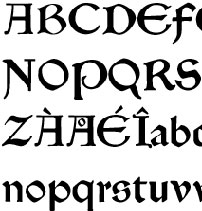
Another type design, Troy (shown above) was based upon studies of manuscript blackletter. (Please note that the versions shown here are digital recreations of Morris's type.) |
In seven years of operation the Kelmscott hand-operated press published 53 books in 18,000 copies. The Kelmscott Chaucer, Morris's masterpiece, took several years to complete the 556 pages and 87 illustrations. In total 425 copies of the book were completed by a total of 11 master printers.
Kelmscott books re-awakened the lost ideals of book design and inspired higher standards of production at a time when the printed page was at its poorest. Morris was fascinated not only with the design of books but wrote a number his own. His fantasy stories were a direct inspiration for C. S. Lewis, The Chronicles of Narnia and influenced Tolkien's,The Lord of the Rings. Read more Some contemporary critics deride the typefaces of Morris and his followers as artsy, not refined enough to be considered serious typography. None can dispute however, that the private press movement increased appreciation for fine printing as well as revived the field of typographic design. |
| Footnotes | |||
| 1 David Raizman, The History of Modern Design, Prentice Hall Art, 2003. |
|||
|
|
|
|
| Copyrights | |||
| ©Designhistory.org 2011 | For Permission Info click here | ||

